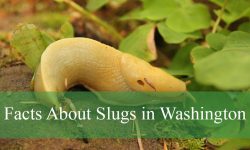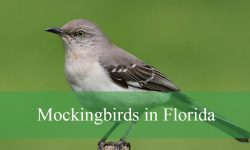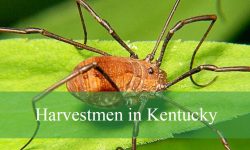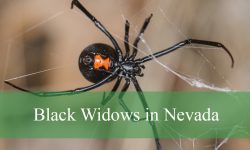As summer unfolds over Louisiana’s bayous and backyards, the air hums with life. Dragonflies skim over ponds, cicadas drone in the trees, and darting between porch eaves and wildflower stems come the glinting forms of wasps — elegant, precise, and misunderstood.
To many, these winged insects inspire fear, their sting a warning of summer’s sharp edge. Yet behind their reputation lies a world of intricate societies, surprising intelligence, and ecological importance. The wasps in Louisiana are not just stinging nuisances — they are engineers, hunters, and guardians of balance in the state’s thriving ecosystems.
From the wetlands of the Atchafalaya Basin to the gardens of New Orleans, wasps play a vital and often unseen role. Their story is one of cooperation, competition, and remarkable survival in a landscape defined by heat, humidity, and life.
This detailed exploration uncovers the secrets of Louisiana’s wasps — their behavior, nesting, communication, and their surprising contributions to the environment.
Meet Louisiana’s Wasps

A Diverse and Dynamic Family
Louisiana’s warm, subtropical climate provides a perfect home for dozens of wasp species. Some are solitary hunters, while others live in complex colonies with queens and workers. The most common groups include:
-
Paper wasps (Polistes spp.) – graceful and slender, known for their open comb nests built under eaves and tree branches.
-
Yellowjackets (Vespula and Dolichovespula spp.) – compact, aggressive defenders that build nests underground or in wall cavities.
-
Mud daubers (Sceliphron and Chalybion spp.) – solitary architects who sculpt clay nests in sheltered corners.
-
Cicada killers (Sphecius speciosus) – large, solitary diggers that prey on cicadas.
Each type has its own rhythm of life, shaped by Louisiana’s seasons and the endless dance between predator and prey.
While many people lump all wasps together, the truth is that the wasps in Louisiana are as varied as the ecosystems they inhabit.
The Paper Wasps: Architects of the Air
Among the most familiar are paper wasps, slender brown or reddish insects with long legs that dangle as they fly. They construct intricate umbrella-shaped nests using chewed wood fibers mixed with saliva — an early form of paper.
These nests often hang from porch ceilings, rafters, or tree limbs. Inside, a single queen lays eggs that develop into larvae tended by sterile female workers. Together, they maintain the colony, feed the young with chewed insects, and defend the nest with fierce precision.
Despite their defensive nature, paper wasps in Louisiana are beneficial neighbors. They feed on caterpillars, beetle larvae, and other pests that would otherwise damage crops and gardens.
To watch them work — delicate legs handling prey, wings shimmering in sunlight — is to see nature’s balance in motion.
Yellowjackets: The Fierce Protectors
The most feared wasps in Louisiana are undoubtedly yellowjackets. With their vivid black-and-yellow stripes and quick temper, they’re often mistaken for bees but behave quite differently.
Yellowjackets build enclosed paper nests, often hidden underground or inside wall cavities. Colonies can grow to thousands of individuals by late summer, each one dedicated to protecting the queen and her brood.
When threatened, they release pheromones that rally other workers into coordinated defense — a swarm capable of inflicting multiple stings.
Yet even these aggressive wasps serve a purpose. They are scavengers and predators, cleaning up carrion, rotting fruit, and pest insects. In the ecological tapestry of Louisiana, they help maintain cleanliness and balance.
Like the swamps they inhabit, yellowjackets embody both danger and necessity — a reminder that nature’s beauty often comes with a sting.
Mud Daubers and Cicada Killers: The Solitary Hunters
Not all wasps in Louisiana live in colonies. Solitary species like mud daubers and cicada killers lead lives of quiet precision.
Mud daubers build small clay cells under bridges, decks, and barn walls. Inside each, they place a paralyzed spider as food for a single egg. When the larva hatches, it consumes the spider, grows, and eventually emerges as an adult.
Cicada killers, on the other hand, are among Louisiana’s most striking insects. Up to two inches long, with amber wings and golden stripes, they look menacing but are gentle giants — uninterested in humans. Females dig burrows in sandy soil and hunt cicadas to feed their young, performing pest control on a natural scale.
These solitary wasps represent the quiet side of wasp life — efficient, vital, and surprisingly peaceful.
Anatomy and Adaptation
Designed for Precision
Every wasp, from the smallest mud dauber to the largest hornet, is an exercise in biological efficiency. Their bodies are divided into three main parts — head, thorax, and abdomen — connected by the signature “wasp waist.”
This narrow waist allows for flexibility during flight and stinging. Their mandibles cut and manipulate prey, while antennae detect chemicals, vibrations, and air movements.
The stinger, a modified ovipositor, is both weapon and tool — used for defense, hunting, or egg-laying. Only females possess it, as males are harmless.
In Louisiana’s humid air, their wings shimmer with microscopic veins that strengthen flight, helping them navigate dense vegetation and unpredictable winds.
Each design detail speaks of survival honed over millions of years — adaptation not just to live, but to dominate the skies.
Senses and Communication
Wasps in Louisiana are highly sensory creatures. They communicate through chemicals called pheromones, which convey alarm, fertility, and recognition.
Their eyes detect ultraviolet patterns invisible to humans, allowing them to recognize flowers and even distinguish colony members.
Recent research has revealed that some paper wasps can remember individual faces of other wasps — an astonishing level of visual memory once thought impossible for insects.
In the dense environments of Louisiana’s forests and wetlands, these advanced senses help them coordinate, hunt, and build societies as intricate as any human neighborhood.
Behavior and Daily Life
Social Structure and Cooperation
Social wasps like paper wasps and yellowjackets live in complex colonies where hierarchy governs every move. The queen begins the nest in spring, laying eggs and feeding larvae until her first daughters mature.
These workers then take over the daily duties — foraging, nest expansion, and defense — while the queen devotes herself entirely to reproduction.
By late summer, the colony’s population peaks. Males and new queens are produced, and after mating, the males die while the fertilized queens seek shelter to hibernate through winter.
When spring returns to Louisiana, the cycle begins anew — a rhythm as reliable as the bayou tides.
The Solitary Lifestyle
Not all wasps follow social rules. Solitary species, which make up the majority of wasps in Louisiana, live alone. Each female builds and provisions her own nest, carefully selecting prey for her young.
Without workers to assist, she performs every role herself — architect, hunter, nurse, and guardian. Despite their independence, these solitary wasps are among nature’s most effective pest controllers, targeting spiders, flies, and caterpillars.
Their efficiency rivals even the social colonies, proving that cooperation isn’t the only key to success.
Diet and Ecological Role
Nature’s Pest Controllers
While their sting gets all the attention, a wasp’s true power lies in its appetite. Almost every species feeds on other insects at some stage — a natural form of pest control that saves crops, gardens, and forests.
Paper wasps hunt caterpillars and beetles, while yellowjackets collect carrion and sweet liquids. Mud daubers paralyze spiders for their larvae, keeping populations in check.
This predatory behavior helps maintain ecological balance in Louisiana’s wetlands and farmlands. Without wasps in Louisiana, pest insects would multiply unchecked, leading to crop damage and habitat imbalance.
They may sting, but they also save — quietly and relentlessly.
Pollinators in Disguise
Though not as famous as bees, wasps are also pollinators. As they visit flowers to feed on nectar, pollen clings to their bodies and transfers between blooms.
Species like paper wasps and mud daubers contribute significantly to pollination in gardens and wild habitats, ensuring the reproduction of countless plant species.
In Louisiana’s diverse ecosystems — from cypress swamps to backyard gardens — their dual role as predator and pollinator keeps life in perfect rhythm.
Myths and Misunderstandings
Myth 1: All Wasps Are Aggressive
False. Only some social species defend nests aggressively. Solitary wasps in Louisiana rarely sting unless handled.
Myth 2: Wasps Serve No Purpose
False. They control pest populations, aid pollination, and recycle nutrients.
Myth 3: Wasps Die After Stinging
False. Unlike honeybees, wasps can sting multiple times without dying.
Myth 4: Wasps Only Live in Summer
False. Many queens overwinter in sheltered spots to start new colonies in spring.
Myth 5: All Wasps Make Nests in Trees
False. Some build underground or in walls; others use mud or plant stems.
Recognizing the truth about wasps in Louisiana transforms fear into respect — understanding into awe.
Wasps and Humans in Louisiana
Living Alongside Wasps
In Louisiana, where people and wildlife share space, wasps are frequent neighbors. They nest in porches, barns, and even outdoor furniture.
While this can cause conflict, most encounters end peacefully when nests are left undisturbed. Simple coexistence strategies — sealing cracks, removing old nests in winter, and avoiding sudden movements — minimize stings and promote harmony.
By respecting their space, humans benefit from natural pest control and a more balanced backyard ecosystem.
Wasps in Culture and Symbolism
Across cultures, wasps symbolize order, productivity, and sometimes aggression — traits reflected in their behavior. In Native American traditions, wasps were seen as builders and teachers, showing humanity how to construct homes and communities.
In Louisiana’s folklore-rich landscape, they often appear as reminders of respect for nature’s boundaries — tiny sentinels of the season’s heat and rhythm.
To watch a wasp at work, shaping her paper nest under a porch beam, is to see artistry born of instinct and discipline — a reflection of nature’s quiet genius.
Environmental Challenges
Climate and Urbanization
Rising temperatures and changing rainfall patterns in Louisiana are altering wasp behavior and distribution. Longer summers extend nesting seasons, while mild winters allow more queens to survive.
Urban sprawl provides new nesting sites but also exposes wasps in Louisiana to pesticides and habitat loss. Managing this balance is key to maintaining healthy populations without increasing conflict with humans.
Researchers from LSU and the Audubon Institute continue to study how climate change impacts wasp ecology, emphasizing coexistence and education as solutions.
The Importance of Biodiversity
Every wasp species — from mud dauber to yellowjacket — fills a specific niche. Losing even one disrupts local food webs, affecting pollinators, predators, and plants alike.
Protecting Louisiana’s biodiversity means preserving these winged hunters. Maintaining natural habitats, reducing chemical use, and supporting native plant gardens help ensure their survival.
In protecting the wasps in Louisiana, we safeguard the intricate systems that sustain all life — including our own.
Surprising and Little-Known Facts About Wasps in Louisiana
-
There are over 4,000 wasp species in North America, many found in Louisiana.
-
Paper wasps can recognize the faces of their nestmates.
-
A single yellowjacket nest can contain more than 5,000 wasps by late summer.
-
Mud daubers paralyze spiders with venom, not to kill but to preserve them for their larvae.
-
Male wasps cannot sting at all.
-
Cicada killers are among the largest wasps in North America but are non-aggressive.
-
Some wasp species help pollinate figs and orchids through specialized relationships.
-
The “paper” of wasp nests is made from chewed wood pulp and saliva.
-
In early spring, only the queen survives winter — she rebuilds the colony alone.
-
Scientists are studying wasp venom for potential cancer-fighting compounds.
FAQs About Wasps in Louisiana
Are wasps dangerous?
They can sting when threatened, but most species are non-aggressive if left alone.
What should I do if I find a nest?
Observe from a distance. If it’s in a risky spot, contact professionals for safe removal.
Do wasps die after stinging?
No. Unlike bees, wasps can sting multiple times.
Why are wasps important?
They control pests, pollinate plants, and balance ecosystems.
How long do wasps live?
Workers live a few weeks; queens can live nearly a year.
What attracts wasps to homes?
Sheltered spaces, sugary food, and open trash bins.
Can I prevent wasp nests naturally?
Yes. Keep areas clean, use peppermint oil sprays, and seal entry holes.
Do wasps survive Louisiana’s winter?
Only mated queens survive by hibernating in sheltered spots.
What eats wasps?
Birds, frogs, mantises, spiders, and even other wasps.
Are wasps pollinators?
Yes. Many visit flowers for nectar and inadvertently pollinate them.
Final Thoughts
The wasps of Louisiana are often judged by their sting, yet their story is one of balance, resilience, and quiet brilliance. From the paper nests under bayou bridges to the solitary burrows in sunlit fields, they weave an unseen web of order across the landscape.
They teach us that power can be delicate, that structure and cooperation can arise from instinct alone, and that even the creatures we fear have a purpose worth protecting.
The truth about wasps in Louisiana is that they are not just insects — they are architects, pollinators, and guardians of the wild rhythm that defines the South. To understand them is to see that every sting in nature carries a lesson: coexistence, respect, and the beauty of balance.






